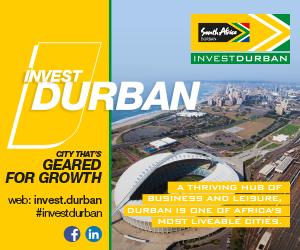Forestry and paper
One of the biggest operations in the forestry and paper sector in Mpumalanga Province is Sappi’s Ngodwana mill. The mill produces 330 000 tons of paper pulp for its own consumption, 250 000 tons of dissolving wood pulp (DWP) and 380 000 tons of paper (newsprint and kraft linerboard used for packaging) annually. Exports account for 70% of the mill’s product.
Ongoing investment at Ngodwana Mill will contribute R13-billion to the provincial economy over 20 years. Sappi’s other large facility in the province, the Lomati Sawmill in Barberton, produces kiln-dried Southern African pine lumber from sawlogs supplied by Sappi Forests.
The mill generates its own energy through co-generation (steam and electricity from renewable and other sources). In 2017 Sappi built a sugar extraction demonstration plant at Ngodwana. Findings from the experiment will help to improve the process of extracting bio-renewable chemicals. Sappi is partnering with Valmet, a Finnish company. Other forestry companies are also looking into energy generation, including AFCOL.
Mpumalanga has 40% of South Africa’s forestry resources. This fact presents an opportunity to exploit the sector’s byproducts in the biomass-to-energy field.
The Zebra Pellets plant in Sabie is to be converted by national utility Eskom into a torrefied pellet plant. The wood will be provided to the plant (owned by the Industrial Development Corporation) and then heated without the use of oxygen (torrified) which creates a coal-like product without the carbon.
Mpumalanga has the ideal climate and topography for forests. Forestry accounts for about 8% of Mpumalanga’s gross domestic product. The sector comprises logging, saw-milling, wood product and pulp and paper manufacture. Pulp and paper are the main exports, along with sawn lumber, wood chips and wattle extract. Most sawn timber in South Africa is used in the construction sector.

The MTO Group, which has 39 900 ha of plantation under management in the Lowveld, teamed up in 2018 with mountain-bike enthusiasts of White River and Nelspruit to develop a set of trails through the hilly landscape of the area.
Plans to develop an Agriculture and Forestry Technology Park are being drawn up by the Provincial Government of Mpumalanga. The Mpumalanga Economic Growth and Development Path (MEGDP) intends to expand the industrial base of the provincial economy, with a focus on beneficiation, agri-processing and value chain development.
When forestry managers, contractor and forestry equipment suppliers gathered at the biannual Focus on Forestry conference in White River in 2019, the theme was “Bridging the digital divide in the African forestry sector”.
Sustainability is a key area for companies in the forestry sector and advances in the Internet of things and AI are being keenly monitored for ways to enhance margins in an environmentally sound way.
York Timbers owns and operates five processing plants, including the including the largest sawmill and plywood plants in South Africa and it has 60 470 planted hectares. The company is considering investing in biomass energy generation. The Industrial Development Corporation (IDC) has a stake in York Timbers and a 42.6% share in Hans Merensky Holdings, a company with timber and processing interests in three provinces. Merensky is responsible for 20% of South Africa’s sawn pine lumber.
The Mondi Group has extensive forestry holdings in the province and has been working on introducing a higher degree of mechanisation in its operations. Mondi has also instituted an ecosystem management plan throughout its forestry operations with the intention of better managing the impact its work has on the environment.

PG Bison has a board plant in Piet Retief. Sonae Rauco runs large plants at White River and Panbult. Komatiland Forests, a 100%-owned subsidiary of state company SAFCOL, has big plantations in several districts. TWK is a R6-billion agricultural company with its headquarters in Mkhondo (Piet Retief).
Asset management company Global Environment Fund created Imvelo Forests and in 2015 the company investigated using thermal imaging to detect fires. Among the other private timber growers in the province are Pull Scar Timber Co, and United Forest Products.
Article source: Forestry and paper sector insight, Mpumalanga Business 2019/20 edition. Find more business and investment insight (digital journal):
Additional resource links:
- Forestry South Africa: www.forestry.co.za
- Institute for Commercial Forestry Research: www.icfr.ukzn.ac.za
- South African Institute of Forestry: www.saif.org.za
- Technical Association of the Pulp and Paper Industry of South Africa: www.tappsa.co.za







